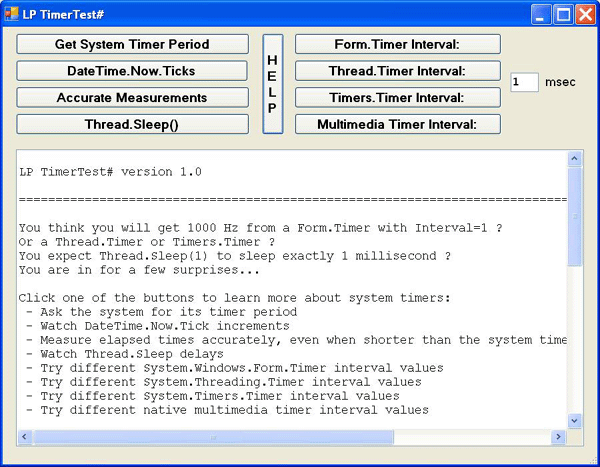
You can also get the minutes and seconds as before. Minutes Console.WriteLine() Seconds Console.WriteLine()Īs before, we can also add on hours, like in the following example: Console.WriteLine((10).ToLongTimeString) We repeat the same process as when we got the date, but this time we will use ToLongTimeString: This also works for AddHours, AddMinutes, AddYear, AddSeconds and so on. If today is 17 July 2012, in 30 days it will be 16 August 2012. If you wanted to know what the day will be in 30 days, you would write: Console.WriteLine((30)) Now we are going to focus on the AddDays Method, which adds days to the current day. Getting the year is also quite simple we use this code: Console.WriteLine() You can do the same for month by putting MMMM instead of dddd (case-sensitive). What we do is write (format) as follows: Console.WriteLine(("dddd")) However, if you want the word “Tuesday” you need to format it. Now this surprisingly outputs 2 (meaning Tuesday ), because Tuesday is the second day of the week. Since the date will be displayed as an integer, we will need to convert it to a string and format it for example: Console.WriteLine() When the number is odd, the color of the statement is Red, and when the number is even, the color of the statement is Blue, as shown below.Here we will get just the month and day on their own. When the program executes, it starts blinking the WELCOME TO JAVATPOINT.COM statement and counting the number to 1, as shown above. Private Sub Button1_Click(sender As Object, e As EventArgs) Handles Button1.Click Private Sub Button2_Click(sender As Object, e As EventArgs) Handles Button2.Click TextBox1.Text = TextBox1.Text + 1 'Incremenet the TextBox1 by 1 Private Sub Timer1_Tick(sender As Object, e As EventArgs) Handles Timer1.TickĮlseIf Label1.ForeColor = Color.Blue Then Timer1.Interval = 600 'set the time interval Label1.Text = "WELCOME TO JAVATPOINT.COM"
VISUAL BASIC NET TIMER WINDOWS
Me.Text = "" 'Set the title for a Windows Form Private Sub TimerProgram_Load(sender As Object, e As EventArgs) Handles MyBase.Load Let's create a simple program to understand the use of Timer Control in the VB.NET Windows Forms. The Stop() method is used to stop the timer control's elapsed event by setting Enabled property to false. The EndInt() method is used to end the run time initialization of timer control that is used on a form or by another component. The Start() method is used to begin the Timer control's elapsed event by setting the Enabled property to true. The Close() method is used to release the resource used by the Timer Control. It is used to release all resources used by the current Timer control.
VISUAL BASIC NET TIMER FREE
The Dispose() method is used to free all resources used by the Timer Control or component.

The BeginInt() method is used to start run time initialization of a timer control used on a form or by another component. It is the default event of a timer control that repeats the task between the Start() and Stop() methods. When the interval elapses in timer control, the Elapsed event has occurred.Ī tick event is used to repeat the task according to the time set in the Interval property. When control or component is terminated by calling the Dispose method, a Dispose event occurs. It is used to get a value that represents whether the component can raise an event. The AutoReset property is used to obtain or set a Boolean value that determines whether the timer raises the elapsed event only once.Įvents property are used to get the list of event handler that is associated with Event Component. According to the interval, a timer repeats the task. By default, it is True.Īn Interval property is used to set or obtain the iteration interval in milliseconds to raise the timer control's elapsed event. The Enables property is used to enable or disable the timer control. The Name property is used to set the name of the control. There are following properties of the VB.NET Timer control. Step 2: Once the Timer is added to the form, we can set various properties of the Timer by clicking on the Timer control. Step 1: Drag and drop the Timer control onto the window form, as shown below. Let's create a Timer control in the VB.NET Windows form by using the following steps.

It starts when the start() method of timer control is called, and it repeats the defined task continuously until the timer stops. Once the timer is enabled, it generates a tick event handler to perform any defined task in its time interval property. It is an important control used in Client-side and Server-side programming, also in Windows Services.įurthermore, if we want to execute an application after a specific amount of time, we can use the Timer Control. The timer control is a looping control used to repeat any task in a given time interval.


 0 kommentar(er)
0 kommentar(er)
